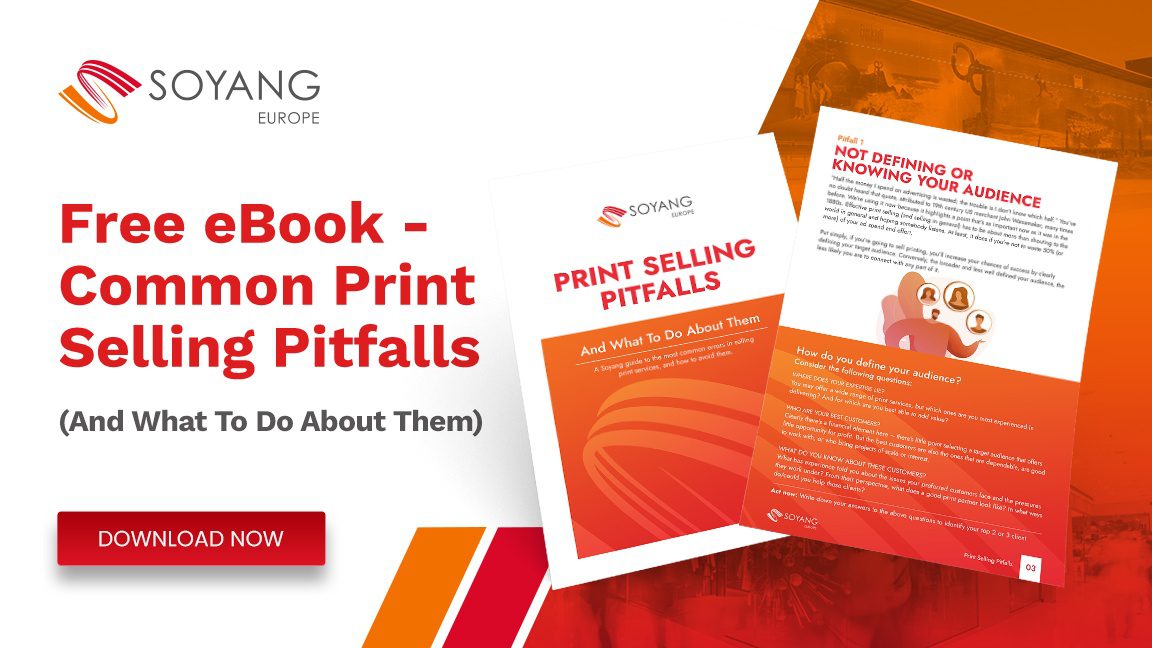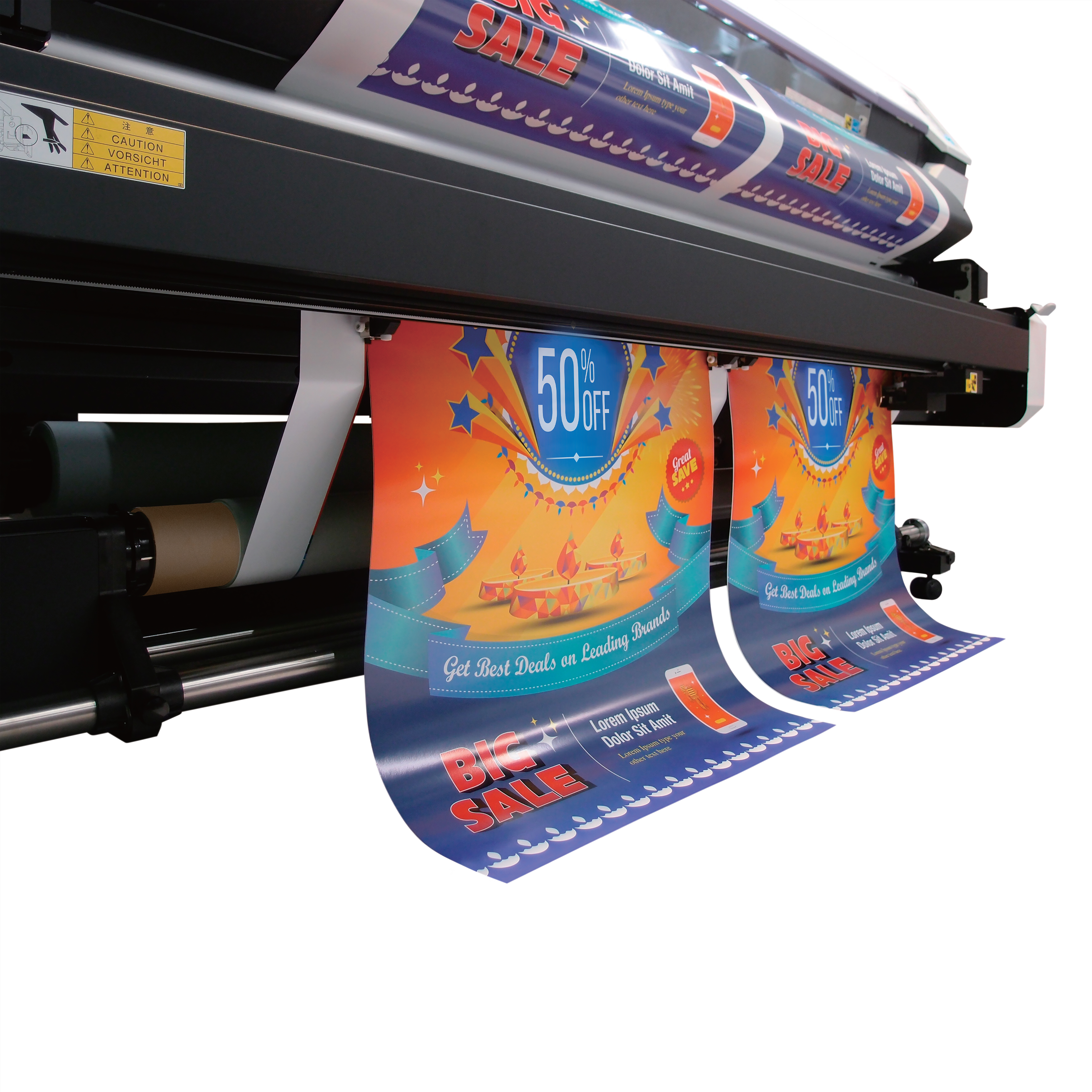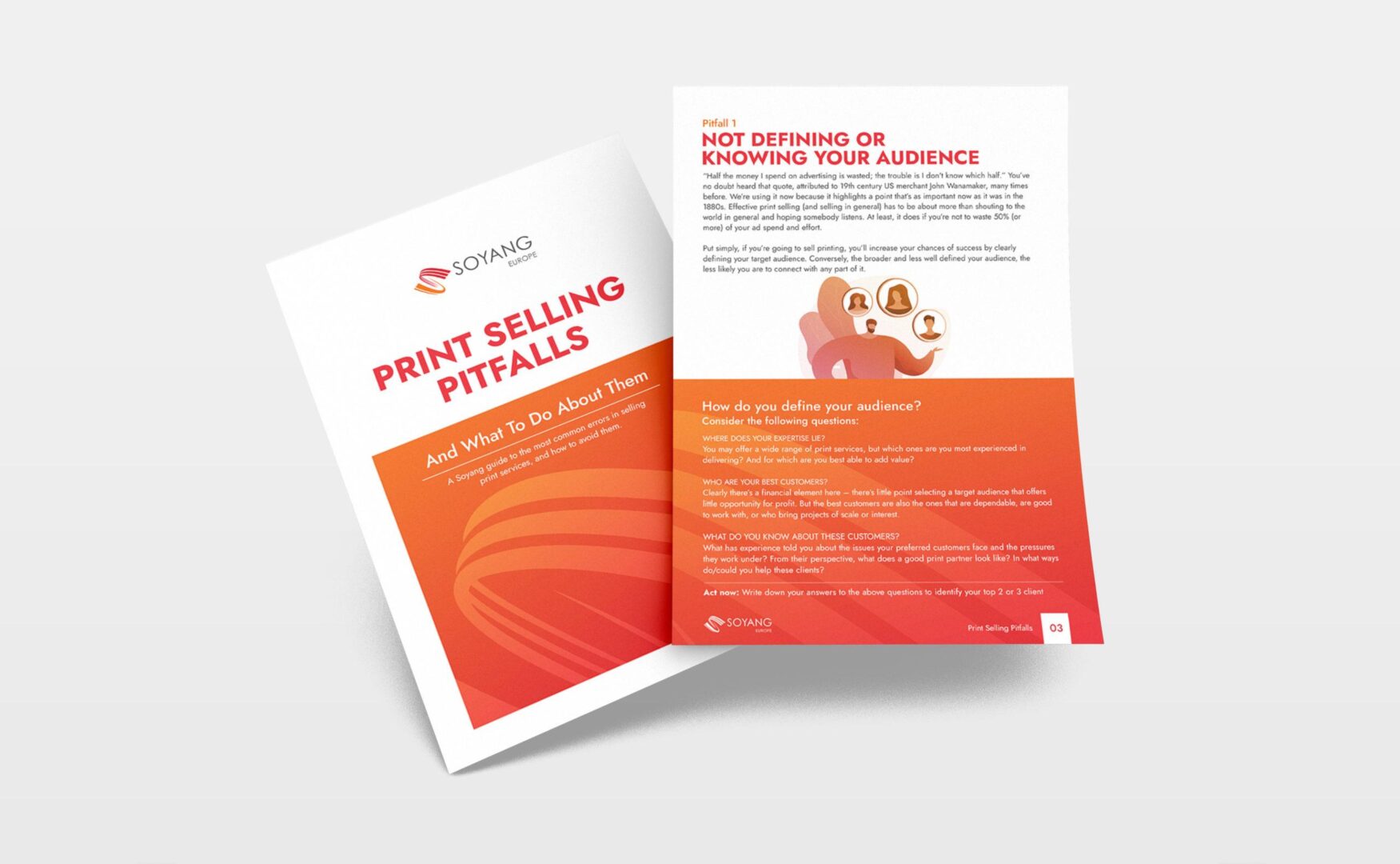The right print management software can make a big difference to your business. But before you dive into comparing options, first you need to narrow your search. And that starts by knowing what you need – and why you need it.
What are the benefits of print management software?
If printing is what you do, print management software enables you to do it more efficiently and more cost effectively.
By centralising your fleet of printers under one software system, you’re better able to manage and control what gets printed when, where and by whom. This can help you control costs, protect print quality, keep confidential information secure, and reduce your environmental impact.
Other features and benefits include:
- Cost analysis: Print management software monitors devices and print volumes, helping you visualise where printers are over/under utilised and helping you plan more effective workflows
- Automated working helps make your people more efficient and gets projects completed quicker
- System oversight monitors ink levels across devices, identifies system faults and flags the need for repair or service
- Usage tracking can help eliminate wasteful printing and ensure that personal (rather than business) printing is kept to a minimum

What do you need from your print management software?
There’s no ‘right’ answer to this.
For some companies – particularly non-printing businesses which still have a heavy reliance on print – the prime driver for the software is to understand why they’re spending so much on their printing (and then reduce spend). For others, the impetus may come from lowering their carbon footprint or improving the flow of work through the business.
And for others, security is an important issue in two senses. First, there’s the connected nature of the print ecosystem, especially when those printers may sit on different sites, and potentially in different countries. Print management software can help protect the information sent to and between your printers.
Then there’s the issue of printed materials left on the printer awaiting collection. Many software manufacturers protect confidential documents by locking the print behind a secure keycode or scan point. Only when the print owner conforms their identity will the printer release the documents.
Ultimately, what organisations need from their print management software typically comes down to one or more of these three essentials:
Printer management – enabling multiple printers in multiple locations to be controlled and monitored from a single location. This increases efficiency by reducing the number of people required to operate the printers. It also ensures that the business suffers less downtime, because issues (from low ink to faults) should be automatically identified and raised early.
Cost management – in part, this is a simple matter of tracking print activity and inhibiting non-business use. There’s also a clear cost benefit to protecting secure information. But we’d argue the biggest cost benefit comes from being better able to understand your print workflow. Print queues cost money. So do printers idling with nothing to do. Print device management software ensures that print work and the printers that do it are kept in balance.
That could enable you to run more efficiently. It could help highlight a need for more printers to reduce bottlenecks. It could even identify a need for fewer printers and help you run leaner.
Output management – A global print operation faces a major challenge in ensuring consistency across the business. Advanced print management software will help you ensure that, when you’re printing across London, New York and Hong Kong, every pixel remains consistent and on brand.

Which print management software product should I choose?
There are lots of options out there. Here are seven of the most popular:
Dispatcher Paragon: Konica Minolta’s entry into a crowded field brings real-time tracking that gives you a clear view of what’s being printed where, “robust” budgeting and secure access control. Buyers Lab made the Konica Minolta its pick for cost accounting and recovery.
PaperCut: With options for every business from SME to enterprise, PaperCut is a popular cross-business option with a heavy emphasis on scalability together with the capability to track and control an unlimited number of printers. Proud of its business-resilience measures, this print management software product offers clustering, backup and restore servers (so you don’t lose print in a power or internet outage) and “seamless fallover techniques.”
Xerox Workplace Suite: Designed especially for mobile devices and workers, Xero’s print management suite is ideal for businesses with large-volume print needs and a workforce on the move. Of particular note from a security perspective is the Content Security workflow, which scans print content for user-defined words or phrases when printed.
PrinterLogic offers a similarly expansive range of workflow, security and mobile options with the additional USP of serverless printing. This enables companies to minimise their print hardware infrastructure, giving their IT people full control over everything from print driver versions to end-user support from one simple portal.
Kyocera’s Net Manager is a good all-round option for print software management. Majoring in security, cost control and overall document output, it’s a good example of the company’s stated goal of making “working spaces smarter.”
Kofax Equitrac places a premium on simplicity. Its intelligent print management software still focuses on the standard pillars of productivity, cost reduction and security, but does so with an emphasis on removing complication via an easy-to-use system. It’s also ideal for a remote or mobile workforce who don’t know which printer to send their work to, which printers are in use, and which are offline.
Last but definitely not least is MyQ, which headlines its cost-cutting capability thanks to user-defined rules and roles which, it says, can reduce the cost of printing by up to 66%. In another typically inventive approach to promoting its benefits, MyQ also estimates that it will save each user 15 hours every year.

How to decide between print management tools
As our quick guide to some of the various software options demonstrates, there are lots of surface similarities between each. Every one of the above providers, for example, offers their own take on security. Every one offers some level of mobile capability.
It’s important to dig a little deeper though, to ensure that the details of that capability match your requirements. It’s also worth comparing elements like user interfaces and simplicity to ensure your people can access the software’s full capability easily.
All print management software should deliver business benefits. But with some due diligence, you could find the right software cuts a significant amount of time, money, carbon and effort from your processes.
Want to find more about building and growing your print business? These blog posts may help;
How To Improve And Grow Your Digital Printing Business
How To Generate Print Sales Leads
How to Sell Printing Services – Top Sales Techniques
7 Top Marketing Strategies For Your Printing Business
How To Write A Proposal For Printing Services
How To Recruit The Right Staff For Your Print Shop
Effective Print Production Management – 11 Ways To Cut Printing Costs









